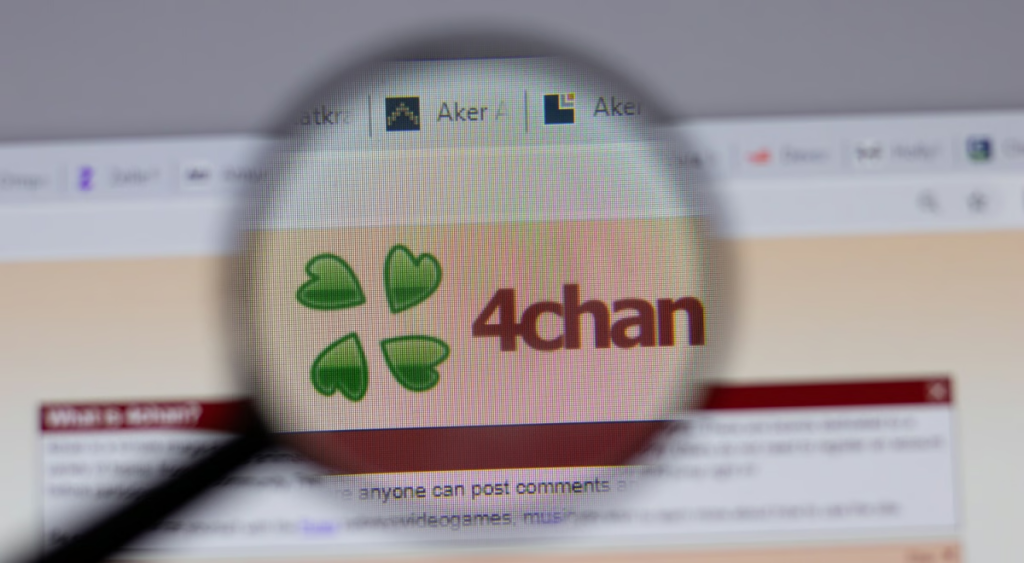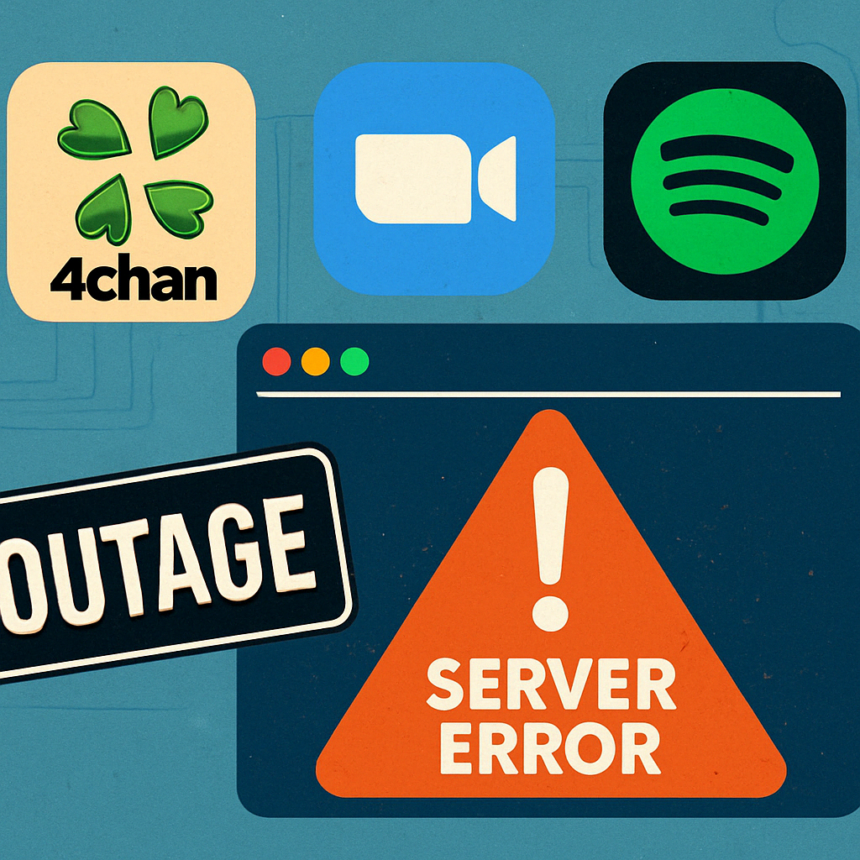In the world of digital services, outages are nothing new. However, when platforms like 4Chan, Zoom, and Spotify experience them, the internet community takes notice. Whether it’s a hacker exploiting vulnerabilities on 4Chan, a glitch preventing Zoom users from joining essential meetings, or Spotify failing to stream music for users worldwide, these disruptions are more than inconveniences — they reflect the more considerable challenges of maintaining digital infrastructure at scale.
What’s Happening & Why This Matters
4Chan: A Hacker’s Strike
4Chan, one of the most notorious imageboard platforms on the internet, recently faced an unexpected outage that frustrated and confused users. Reports quickly emerged that a hacker had infiltrated the site, taking control of several administrative functions. The hacker posted a message under the account of Hiroyuki Nishimura, 4Chan’s owner, claiming responsibility for the breach with a taunt: “LOL HACKED I LOVE DICKS.” This unusual display hinted that the attack might have been more about fun for the hacker than any financial or political gain.
The attack leveraged old vulnerabilities in the system, which the hackers appeared to have exploited to their advantage. Their actions included banning users, retrieving personal data, and possibly accessing private IP addresses. The timing of the attack caught many by surprise, especially given the lack of major security updates to the site in recent months. As such, it serves as a critical reminder of the importance of keeping older platforms secure and preventing potential breaches before they occur.

Zoom: The Meeting That Wasn’t
Zoom, the video conferencing tool that has become synonymous with remote work and virtual meetings, also faced a major outage that left thousands of users unable to access their meetings. Zoom was down for several hours, preventing individual and corporate users from connecting to their video conferences. According to Downdetector, the downtime peaked at 60,000 reports of disruptions. Though the company did not provide a detailed reason for the failure, the issue occurred when remote work peaked, making it even more disruptive.

While some joked about the “unexpected vacation” Zoom provided, many users felt the pressure of missed opportunities. The downtime had real consequences for business professionals and educators who depend on Zoom for virtual collaboration and education. Despite the playful memes circulating online, the Zoom outage showcases the fragility of video conferencing platforms, primarily as businesses increasingly rely on these services to stay connected and productive.
Spotify: Music Without Sound
Spotify, the music streaming giant, wasn’t immune to service disruptions either. On the same day as the Zoom and 4Chan outages, Spotify users faced difficulties accessing their playlists and playing music. Spotify outages were reported globally, with over 48,000 issues logged on Downdetector. The issue began around 6:20 a.m. ET and persisted for about two hours before it was finally resolved. The glitch primarily affected the search function and the ability to view specific artists, though users could still play music they had downloaded beforehand.
The outage drew backlash, particularly from users who rely on Spotify for workouts, commutes, and entertainment. For many, the timing of the Spotify issue was especially frustrating, as it interfered with peak hours for streaming music during workouts or breaks. While the company assured users that the problem was resolved, the incident reminded everyone how vulnerable even the most widely used digital platforms can be to sudden service failures.

TF Summary: What’s Next
The outages affecting 4Chan, Zoom, and Spotify demonstrate the increasing complexity of maintaining reliable digital services. These disruptions highlight cybersecurity vulnerabilities, service reliability, and dependence on digital platforms for business and personal activities. The 4Chan breach raises essential questions about how internet communities are safeguarded against hacker attacks. Similarly, the Zoom outage and Spotify downtime serve as reminders that even the most popular platforms can face technical issues that prevent users from accessing vital services.
Moving forward, platforms and service providers must prioritize security measures, server capacity, and failover systems to ensure users can always access their services without interruption. Companies are now under increasing pressure to ensure their digital infrastructures are secure, responsive, and resilient, especially as more users worldwide rely on them for work and entertainment.
— Text-to-Speech (TTS) provided by gspeech


